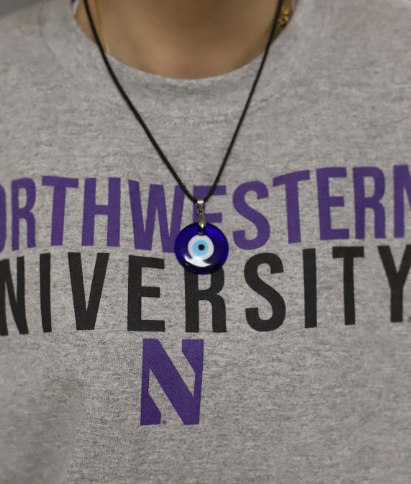The Mysteries Behind the Eye of Imagination
March 7, 2023
Often no enchantment has a greater reputation or recognition when it comes to averting the occult bad energies of the world than the “evil eye.” The succinct summation of the cobalt-blue eye is extensively exploited and has featured everything from sidewalls of airplanes to the panels of comic books, adding to the bazaars of Istanbul.
The fashion industry has included evil eye iconography most over the past ten years. Supermodel Gigi Hadid seized on the trend in late 2017 by announcing that she will be launching the EyeLove shoe collection. Kim Kardashian has been seen donning bangles and gaudy with the sign countless times.
Despite the impression that the evil eye is now becoming more popular given all this attention, the sign has actually been capturing people’s interest for thousands of years.
To appreciate the genesis of the evil eye, the distinction between the amulet and the true evil eye should be recognized. Although the ocular amulet is frequently referred to as “the evil eye”,it is primarily designed to be a protector, fending off the real evil eye. The real evil eye is in reference to a curse delivered through a hostile look that is typically motivated by resentment. The amulet, also known as a nazar, has existed in various forms for several thousands of years. However, the curse dispels are far older and trickier to track down.
The notion behind the affliction of the evil eye is not particularly complex; it is based on the premise that people who succeed or gain notoriety are enviously looked upon by those beside them. Their good fortune will be tarnished by a curse that originates from their jealousy. In passages from the ancient Greek romance Aethiopica, Heliodorus of Emesa, he succinctly expresses the idea: “When anyone looks at what is excellent with envious eyes, he fills the surrounding atmosphere with a pernicious quality, and transmits his own envenomed exhalations into whatever is nearest to him.”
Cultures and centuries have believed in this curse, and to date one of the most thorough collections of tales about it is Frederick Thomas Elworthy’s The Evil Eye: The Classic Account of an Ancient Superstition. Elworthy delves at manifestations of the sign in various cultures; from the terrifying gaze of Greek gorgons to Irish folktales about men who could bespeak horses with a single glance, almost every culture has a fable about the evil eye. Despite its possibly pagan overtones, the eye sign is so thoroughly ingrained in culture that it even appears in sacred books such as the Bible and the Quran.
Yet one can’t help but wonder if the eye’s relevance and heritage will someday be forgotten as it evolves in tandem with the media of the modern world. Fears of cultural appropriation have already been sparked by some contemporary interpretations, particularly when it comes to fashion’s usage of the evil eye in the Hamsa, which is revered in both Judaism and Islam.
While this e symbol can be able to cross some limitations, whether they are cultural, geographical, or religious, it might be beneficial to think about its significance beyond being just a fashion accessory or souvenir. The belief in the evil eye dates back to the very beginning of civilization and has continued to be one of the world’s most persistent superstitions.






